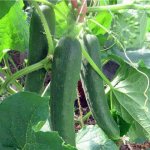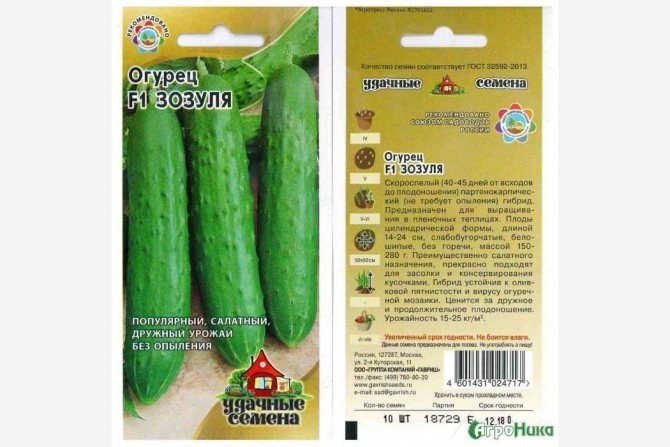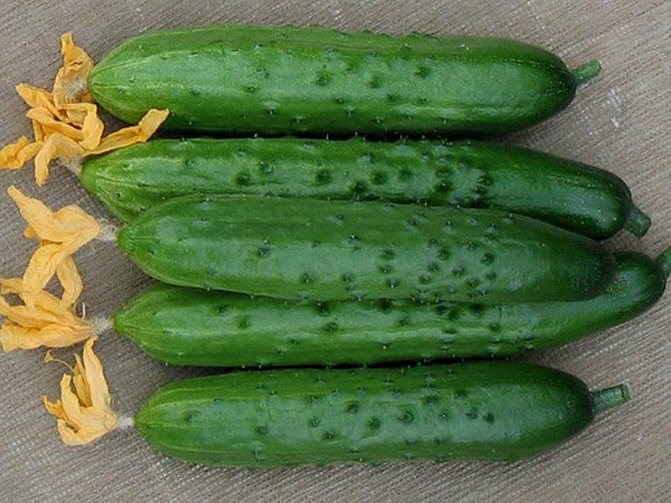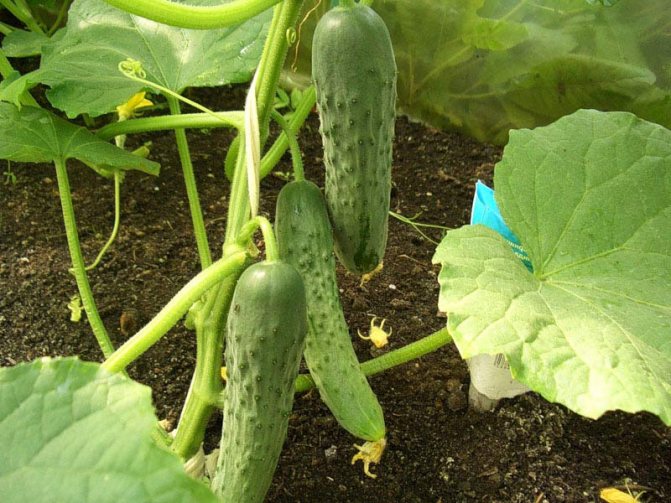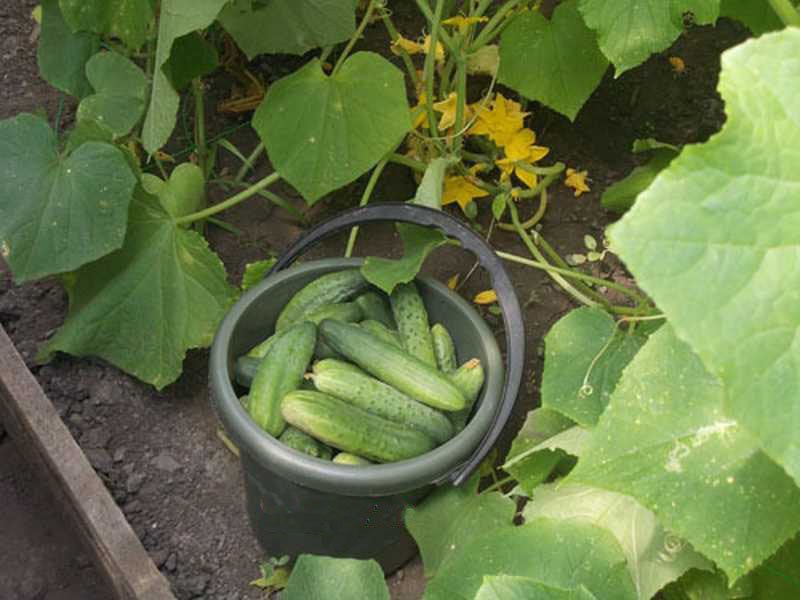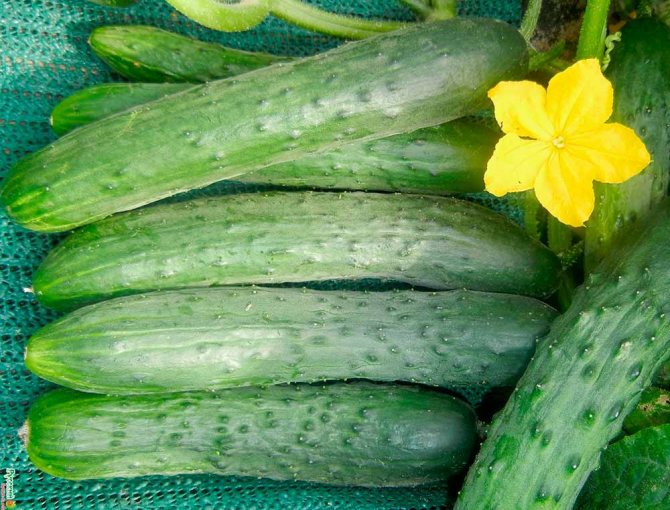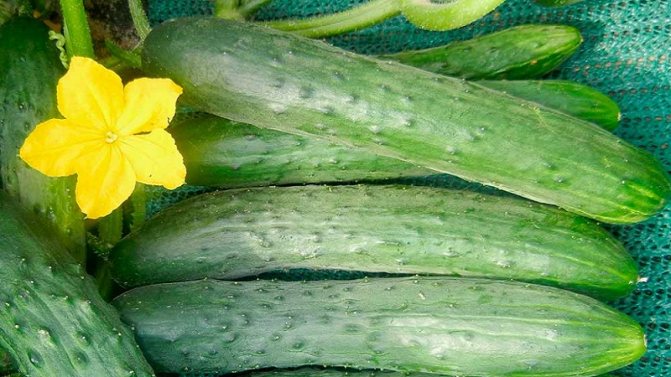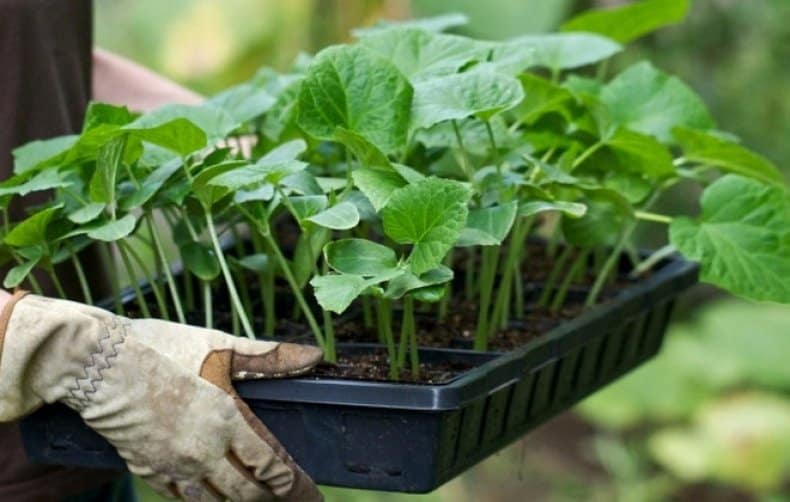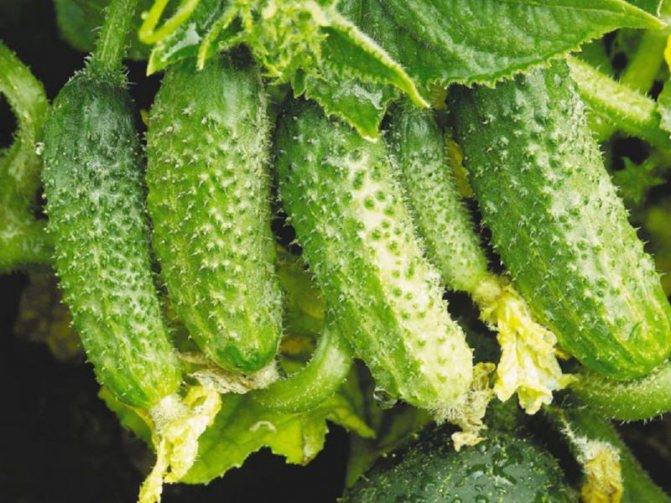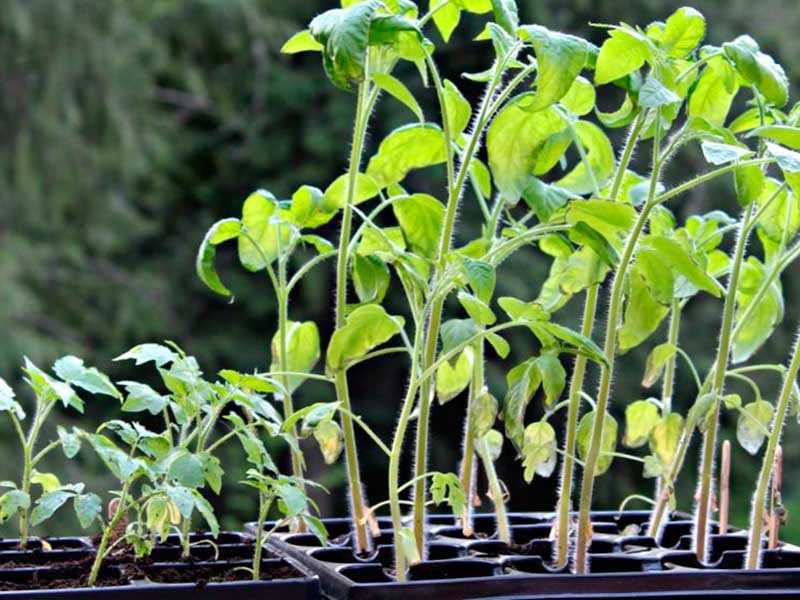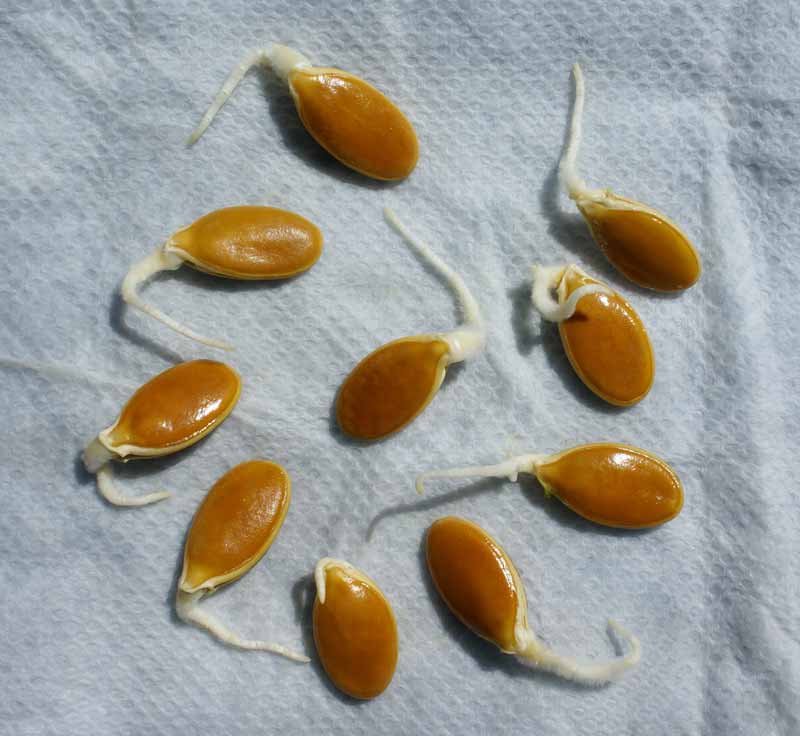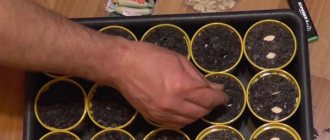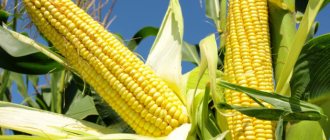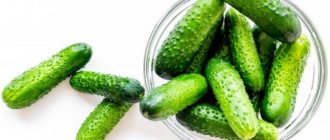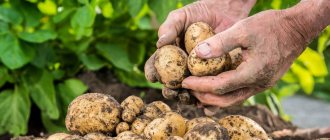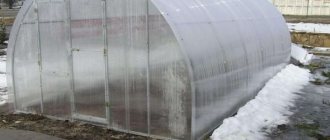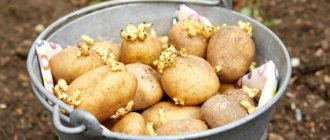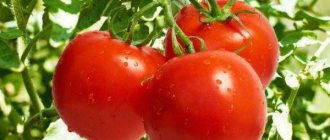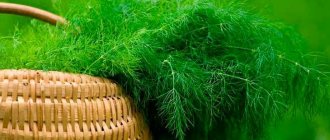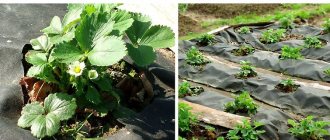Even a novice gardener probably grows cucumbers on his land plot. This culture came to us from India, where it is still found in the wild today. Domestic farmers were offered more than 3 thousand varieties of cucumber, which differ in the appearance of the fruit, agrotechnical characteristics. However, from this wide variety, several best varieties can be distinguished, to which the Zozulya F1 cucumber undoubtedly belongs. In the article, we will try to describe the main advantages of this variety, the taste and appearance of the cucumber, as well as the cultivation features.
Advantageous features

Cucumber variety Zozulya F1 is parthenocarpic, which means that the process of pollination of its flowers takes place without the participation of insects and humans. The plant is able to independently form a large number of ovaries, regardless of weather conditions, the presence / absence of insects. Thanks to this, the Zozulya F1 variety has an extremely stable, high yield of 16 kg / m2.
To obtain the Zozulya F1 variety, breeders crossed cucumber varieties with different genetic codes. Due to this, the hybrid has an excellent taste without bitterness. Also, hybridity endowed the Zozulya F1 variety with special resistance to such ailments as root rot, olive spot, and cucumber mosaic virus. These cucumber ailments are characteristic of a greenhouse environment with high humidity and temperature. The genetic protection of the Zozulya F1 variety allows you to safely grow it in greenhouse conditions.
The ripening period for Zozulya F1 cucumbers is approximately 40-45 days, while some other cucumber varieties require more than 60 days. This early maturity allows you to get an early harvest of cucumbers, as well as to grow crops in areas with a short summer period.
Due to self-pollination, a short ripening period of cucumbers and resistance to diseases, the Zozulya F1 variety can be successfully grown in open ground, in greenhouses, including in the presence of a harsh climate, for example, in Siberia or the Urals.
Soil disinfection
Soil disinfection is a very important technological process that cannot be ignored. It can protect against many pathogens and pests.
Disinfection can be performed with or without special preparations.
- Steam treatment; The soil in a cloth bag is placed in the oven for 30-40 minutes. At very high temperatures, together with pathogens, beneficial bacteria can disappear, be careful.
- Freezing;
- Treatment with a manganese mixture (3 g / 10 l of water) followed by treatment with antifungal drugs.
Advice! If the soil is very acidic (and cucumbers do not like this), you can use components that can reduce the acidity of the soil. These are dolomite flour, fluff lime and chalk.
Description
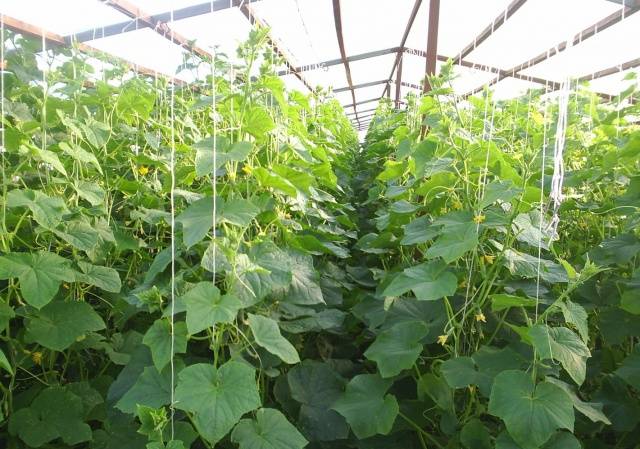

The cucumber is characterized by an average length of a whip, needs a garter Its leaves are large, bright green. The ovaries are formed in bunches, which allows the cucumbers to ripen in large quantities at the same time.
Zozulya F1 cucumbers have a cylindrical, even shape. Their length varies from 15 to 25 cm, weight from 160 to 200 g. On the surface of the cucumber of this variety, you can observe small bumps and rare black thorns. The variety is characterized by light longitudinal stripes.You can see a photo of a Zozul F1 cucumber below.


The flesh of the vegetable is dense, firm, crispy, with a sweetish taste, the skin is thin. Cucumber is excellent for making fresh salads and canning, pickling. Heat treatment insignificantly affects the characteristics of the cucumber; after canning, its pulp retains its crunch and elasticity.
Main characteristics
- The variety was bred by breeders of the V.I. Edelstein.
- The variety is early in ripening, since it takes only 46-50 days to get the first product.
- Plants thrive in greenhouses, greenhouses or ordinary beds.
- Fruit ripening lasts about two months.
- The peel on the fruit is thin, smooth, dark green in color.
- The fruits are characterized by the presence of small thorns on the surface.
- The pulp is juicy, crispy, dense.
- The shape of the fruit resembles a cylinder with a slight bend at the bottom.
- Partially pollinated plants have massive bushes with medium branching.
- Scourges are quite massive with a slight lateral branch.
- The variety does not need to be pinned, it is resistant to diseases, withstands slight shading.
- With proper cultivation, you can harvest 8-12 kg. fruits from 1 sq. m.
Growing cucumbers variety Zozulya F1
It would seem that what could be easier than growing a cucumber: planted the seeds and wait for them to bear fruit. In fact, in order to get a full-fledged harvest of cucumbers, the gardener needs to carry out a whole range of measures:
Selection of fertile seeds
Having bought cucumber seeds, one cannot be completely sure that they are all sufficiently full and viable. You can choose viable seeds from the total mass as follows: add 2 tablespoons of table salt to 5 liters of water, then mix the solution thoroughly and place the seeds of Zozulya F1 cucumbers there. After 4-5 minutes, the floating, empty seeds must be removed, and the ones that have settled to the bottom must be taken away for further germination.
Important! Such an event allows not only to select the best seeds, but also to remove possible pests from their surface.


Germination
In order not to occupy the pots with dissimilar cucumber changes, they are germinated. There are several ways to germinate cucumber seeds, for example:
- Fold gauze in 2-3 rows, place on a saucer and moisten with water. Put cucumber seeds on its surface and cover them with the same layer of gauze, which must be moistened again. The saucer with seeds should be placed in a warm place and periodically sprayed with a spray bottle. Cotton wool can be used instead of gauze.
- Place cucumber seeds in a napkin, tie it in a knot and moisten it with warm water (about 30-350C). After that, the nodule with seeds must be placed in a plastic bag and left in a warm place until germination.
- On a piece of cloth moistened with water, spread the cucumber seeds, cover them with a second damp piece of cloth. The resulting "sandwich" is placed in a jar with sawdust steamed with boiling water, so that they cover the fabric from all sides.
In addition to the above methods, there are other ways to germinate the seed, but they all consist in creating favorable conditions for the cucumber with high humidity and temperature.
Important! Cucumber seeds treated with growth activators during production (glazed) do not need germination.
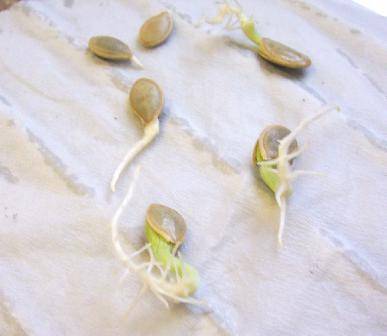

In favorable conditions, soaked cucumber seeds germinate in a couple of days.
Growing cucumber seedlings
Sowing seeds of the Zozulya F1 variety is recommended to be carried out in May. If the further cultivation of cucumbers will be carried out in a greenhouse, then it is possible to sow seeds for seedlings earlier than this period.
For growing cucumber seedlings, you can use ready-made soil compositions or make a mixture yourself.To do this, in equal proportions, it is necessary to mix fertile soil, sand and peat.
It is recommended to use small containers as containers for cultivating cucumber seedlings, however, peat tablets and pots are the best option. When planting cucumbers, they can be embedded in the soil for subsequent decomposition without injuring the root system of the plant.
Before sowing a cucumber seed, peat tablets are soaked in water until they swell completely, after which one seed is placed in each of them. Peat pots are filled with prepared soil, into which two cucumber seeds are embedded. With the appearance of cotyledon leaves, the weakest potted plant is removed.
Until the seedlings germinate, the containers are covered with foil or protective glass and placed in a warm place (27 ° C). After the emergence of cucumber shoots, the shelter is removed and the seedlings are placed in a lighted place with a temperature of 20-220C. For watering cucumbers, it is recommended to use melted or boiled warm water.
To dive cucumber seedlings into the ground, two conditions must be met:
- night temperatures should not fall below + 100C;
- cucumber seedlings should have 2-3 true leaves.
As a rule, from the moment of germination of a seed of the Zozulya F1 variety until the seedlings dive into the ground, it takes about 20-22 days.
Diseases and their prevention
Zozula is characterized by sufficient disease resistance, but some problems are not excluded:
- Ascochitosis... There are watery spots with black dots on the stems, leaf stalks. The stem becomes dry, mossy, the leaves are covered with brown spots with black dots. For prevention, it is necessary to regularly ventilate the greenhouse, treat plants with fungicides, and burn diseased specimens.
- Anthracnose... It manifests itself as rounded brown spots on the leaves, depressed brown areas on the stem, bitterness and rapid fruit decay. Prevention is the same as for ascochitis.
- Bacteriosis... Expressed in angular brown spots on the leaves, followed by the formation of holes. The fruits become twisted, watery, ulcers appear. For prophylaxis, careful seed dressing, optimal temperature and humidity in the greenhouse, Bordeaux spray liquid (dissolve 10 g of lime and copper sulfate in a liter of water) is necessary.
- Downy mildew... It is expressed by yellow spots and purple bloom on the leaves, which turn outward and dry out. For prophylaxis, it is necessary to pickle the seeds, ensure the proper microclimate in the greenhouse, and use fungicides.
- Powdery mildew... It manifests itself as a white bloom on the leaves, gradually capturing their outer sides and darkening. The fruits become ugly, bitter. As a preventive measure, it is necessary to pickle the seeds, disinfect the greenhouse, maintain a stable microclimate in it, and use fungicides for spraying.
- Aphid... These black or greenish insects are clearly visible. They lead to tuberosity of the leaves and their curling, stopping the growth of plants. It is necessary to use insecticides: Arrivo, Decis.
Diving seedlings and caring for an adult plant
Cucumbers, like other plants, love nutritious soil, therefore, before picking seedlings, compost is introduced into the ground in the amount of 0.5 buckets per 1 m2, as well as mineral fertilizers. Wood ash must also be added to acidic soil. Cucumbers of the Zozulya F1 variety have stems of medium length, therefore, the planting scheme in the ground involves the placement of 4 bushes per 1 m2 of land.


Peat pots and tablets in the process of picking are embedded in the ground along with cucumber seedlings. When using other types of containers, the seedlings must first be watered and removed, keeping a lump of soil on the vine.
The first time after picking, cucumbers are watered daily, then once every 2 days, during the drought period, once a day. Watering should be done before sunrise or after sunset. Water should not come into contact with the cucumber leaves.
Weeding, loosening and fertilizing are prerequisites for a rich cucumber harvest. So, fertilizing with nitrogen-containing and mineral fertilizers should be carried out every 2 weeks. You can see an adult plant and hear the feedback of an experienced gardener about the Zozulya F1 variety in the video:
In the phase of active fruiting, harvesting must be carried out daily, so that the forces of the plant are directed to the formation of young cucumbers.
Growing Zozulya F1 cucumbers is not particularly difficult even for a novice farmer. Sowing cucumber seeds for seedlings in May, the peak of fruiting will be in June and July. Significant volumes of the harvest will allow you to feast on fresh cucumbers and prepare winter supplies. The taste of vegetables will surely be appreciated by even the most fastidious gourmets.
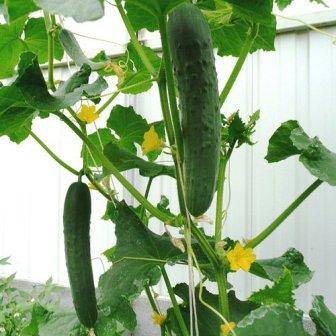

Cleaning, storage, use


Harvesting begins 1.5 months after germination. Do it in the morning or evening. Remove the fruits carefully so as not to injure the stem of the plant, gently pinch the tails with nails. The fruits are placed in boxes carefully, without throwing, otherwise the presentation will be lost, and in the places of impacts the greens will begin to rot on the very first day. Harvested regularly, giving the opportunity to form new ovaries.
The harvested fruit can be stored in a cool basement or in the refrigerator in the vegetable compartment. You should not additionally moisten the greens, you can only install a bucket of water next to the boxes, which will increase the humidity in the room. For long-term storage, the fruits are not used. The maximum term is 7-10 days. The crop that has not been used fresh is sent for processing: pickling, conservation.


Testimonials
Gardeners speak positively about the Zozul hybrid and recommend growing it to those who are ready to devote time and effort to caring for the plants.
Galina, Belgorod: “We grew such cucumbers last summer, the salads were incredibly tasty. I am very glad that I was able to find this hybrid. But at first I could not grow them, there were always some problems. Either the yield is small, then the fruits are small. As soon as I started to take a closer look at the plants, everything immediately improved. I am very glad that I can enjoy such a delicate taste. "
Natalia, St. Petersburg: “I plant seeds in open ground every year. The first fruits I grow are long, very even. When the bush stops bearing fruits, they already appear crooked. But in general, this hybrid is recommended for greenhouse planting. "
Elena, Moscow: “I use these cucumbers only for salad, because they are large, long, and most importantly, juicy. When we planted them, and they began to grow and tie, we were immediately glad that there would be a lot of cucumbers. It turned out to be true, we planted a little seeds, we got a lot of fruits, and we got a good harvest ”.

